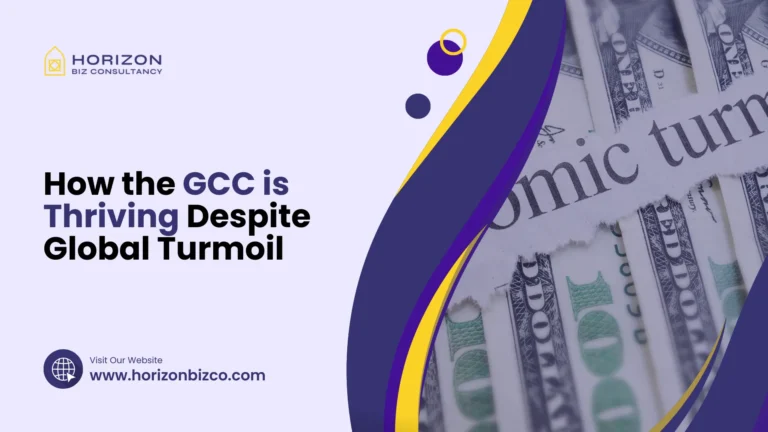The year 2025 has brought economic troubles for much of the world. Growth is slowing sharply in the United States, Europe, and Asia. This is due to high inflation, trade wars, and technology disruptions.
One region continues to thrive: the Gulf states. The Cooperation Council for the Arab States of the Gulf (GCC) grows at nearly 3% each year.
So how has the GCC achieved economic resilience in turbulent times? Read on to learn the key factors.
Oil Income Insulates the GCC from Export Market Volatility
Global trade battles have crushed exporters in other countries. When overseas sales drop, so does growth.
Fortunately, GCC countries rely little on exports compared to nations like China or Germany. Domestic consumption drives their economies instead.
The Gulf produces 30% of the world’s crude oil and holds 20% of natural gas reserves. Oil and gas make up over 50% of GDP across GCC members. These resources power internal industries like petrochemicals, plastics and metals manufacturing.
Energy wealth also enables heavy public infrastructure investment in roads, ports, facilities and utilities to support business expansion.
So even massive shocks in global export markets have minimal impact on Gulf economies.
Regional Conflicts Rarely Spill Over Into the GCC
The Middle East has no shortage of geopolitical tensions. But skillful diplomacy and governance ensures surrounding conflicts bypass GCC borders.
Its members have well-defended boundaries and stable regimes. Citizens enjoy excellent infrastructure, social services, healthcare and nearly tax-free incomes.
This prosperity minimizes civil disruption from nearby conflicts. People have too much to lose by undermining their own governments over disputes in neighboring states.
Occasional terrorism remains a threat. But unified security agencies with extensive capabilities have contained this risk through vigilant policing and intelligent community engagement.
Meticulous Economic Diversification Efforts Pay Off
GCC governments recognized long ago the need to expand beyond oil and gas. They invested heavily to develop new industries before crisis struck.
Each state has unique strengths:
- UAE: Dubai excels as a tourism and financial services hub. Abu Dhabi dominates in aerospace, petrochemicals, defense and renewable energy.
- Saudi Arabia: Major infrastructure projects, logistics networks and special economic zones drive non-oil manufacturing, finance, healthcare, education and technology sectors.
- Qatar: World-class transportation links and real estate developments positioned it as a global commerce hub. It also holds vast gas reserves.
Strategic development of non-energy sectors made GCC economies far more resilient. So when oil prices eventually decline, their stability persists.
Conclusion
The GCC owes its continued success in 2025’s unfavorable global climate to decades of preparation by wise leaders.
Its heavy public infrastructure spending provides a thriving business environment. Investor-friendly policies encourage entrepreneurship and private enterprise. And non-oil industries flourish thanks to vast state support.
As long as GCC authorities make sound economic decisions, the region should keep expanding faster than almost anyplace else.
Prosperity won’t last forever, though. To cement long-term resilience, Gulf countries may need to:
- Make government services more efficient
- Expand private sector opportunities for young graduates
- Promote innovation by supporting more emerging technologies
Frequently Asked Questions
A. Unlike most countries, Gulf economies rely far less on exports which buffer them from global trade disruptions. Regional conflicts also rarely destabilize local markets. And they prudently diversified revenue sources beyond oil years ago.
A. GCC members would have adjust by further growing non-oil sectors or trimming expenditures. But they still hold some of the world’s lowest production costs due to immense scale, so their petroleum industry would likely remain solidly profitable.
A. The UAE has been the fastest growing Gulf economy at over 3% annually. Dubai in particular exceeded 4% pre-pandemic. Wealthy expatriate influx, tourism rebound and rising non-oil private sector strength drive UAE’s momentum.
A. It’s unlikely unless multiple all-out wars erupted around Gulf borders simultaneously. More probably, occasional civil conflicts would prompt minor market fluctuations without stopping expansion. Defensive capacities remain extremely robust.






